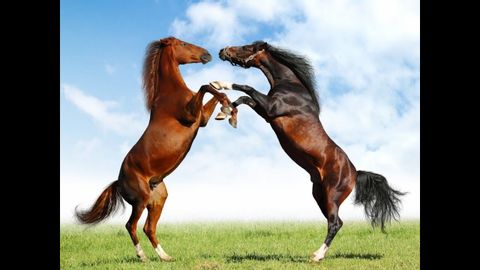馬 - ナショナルジオグラフィック (Horses - National Geographic)
噹噹 が 2021 年 01 月 14 日 に投稿  この条件に一致する単語はありません
この条件に一致する単語はありません- n. (c./u.)人間社会;世界;世界;宇宙;分野
- v.t./i.到着する;届く;手を伸ばす
- n. (u.)権力の及ぶ領域
- n. (c./u.)レース;人種
- v.i.競争する;大急ぎで動く : 大急ぎで行く
- v.t.即効連れて行く(持っていく)
- n. (c.)遊園地の乗り物;自転車や馬にのること
- v.t./i.(車 : 列車などに)乗客として乗る;乗る
エネルギーを使用
すべての単語を解除
発音・解説・フィルター機能を解除

